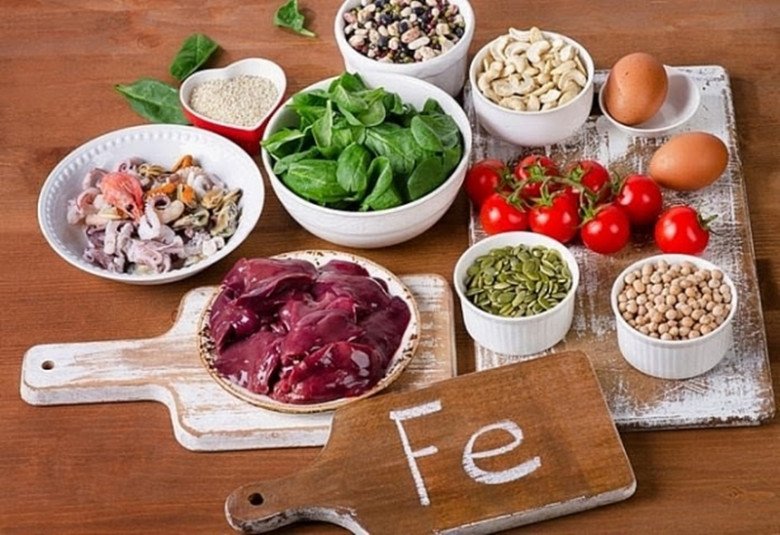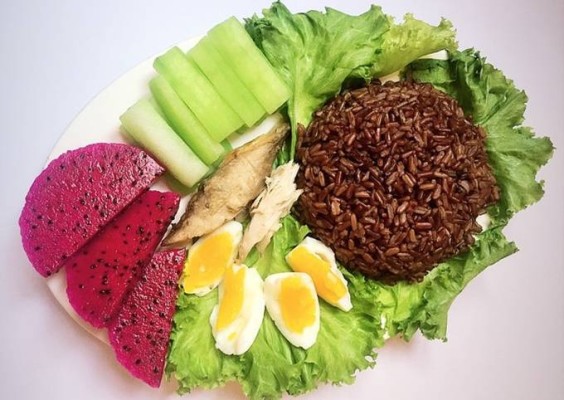The menstrual cycle also influences a woman’s metabolism, weight, and appetite. However, by understanding the different phases of the menstrual cycle and adopting appropriate diet and exercise routines, women can not only improve their overall health but also efficiently lose weight with half the effort. So, how can one lose weight during the menstrual cycle? Let’s explore some secrets below.
Exercising and Eating According to the Menstrual Cycle
The menstrual cycle typically lasts between 25 and 28 days and is divided into four phases.
1. Menstrual Phase: Days 1-7 of the Cycle
The menstrual phase is the first stage of the menstrual cycle. It begins when the egg from the previous cycle is not fertilized, causing a decrease in estrogen and progesterone hormone levels. Since pregnancy has not occurred, the uterine lining that supports pregnancy is no longer needed and is shed through the vagina. This period is also when the body is prone to weakness, anemia, mood swings, irritability, and back pain.

During this phase, instead of intense workouts, opt for gentle exercises such as walking, yoga, and pilates. You may also continue weight training but at a moderate intensity. Exercising during this phase effectively stimulates blood circulation to the muscle tissues, reducing fatigue. Additionally, physical activity during menstruation increases oxygen supply to the muscles, boosts metabolism, and enhances the body’s endurance.
Nutritional Recommendations for this Phase:
– Iron Intake: To maintain adequate energy levels throughout the day, individuals need 1-3mg of iron daily, depending on their physical condition. Iron is essential for producing red blood cells, hemoglobin, and myoglobin. During menstruation, iron is lost through blood shedding, which can lead to fatigue and irritability. Therefore, it is crucial to replenish iron levels by consuming iron-rich foods such as lean red meat, beans, and sweet potatoes.

– Hydration: Drinking ample warm water helps regulate blood flow and mood while alleviating intense cramps.
– Avoid Alcohol and Stimulants: Consuming alcohol during this time can lead to dehydration, exacerbating headaches and digestive issues. It also negatively impacts muscle development, making movement and physical activity more challenging.
2. Follicular Phase: Days 7-12 Post Menstruation
The follicular phase is considered the period of optimal physical and mental health for women. It is also known as the “golden time” for weight loss. High levels of estrogen are released during this phase, promoting muscle cell growth. As muscle mass increases, the body’s metabolism accelerates, resulting in higher calorie burning and more effective fat breakdown.

During this phase, engage in high-intensity workouts with a rapid pace, such as running, swimming, and heavy weight training. The weight loss effects will be doubled compared to exercising at the same intensity during other phases.
It is recommended to consume more meat, fish, seafood, eggs, dairy, and vitamin C-rich fruits during this phase to promote muscle growth, reduce fat, and detoxify and cleanse the skin.
3. Ovulation Phase: Days 14-21
During the ovulation phase, the body’s metabolism gradually returns to normal, and weight loss becomes less rapid than in the “golden period.” However, it is beneficial to maintain the same exercise intensity as in the follicular phase to enhance endurance and sustain the body’s rhythm through practices like yoga, swimming, running, and other dynamic sports.

As appetite increases during this phase, and the body more readily absorbs unhealthy fats, it is advisable to start reducing starch intake. Consider substituting white rice with brown rice or sweet potatoes and increasing water consumption.
4. Luteal Phase: Days 1-7 before Menstruation
The days leading up to menstruation, from day 1 to day 7, are known as the “luteal phase.” During this time, the female body produces high levels of estrogen, which can lead to irritability, fatigue, and a sense of heaviness, making physical activity more challenging. Therefore, it is recommended to gradually decrease the intensity of workouts during this phase to allow the body to adjust as menstruation approaches.

Additionally, the surge in estrogen levels and the decline in progesterone cause a drop in blood sugar levels. In response, the brain signals the body to replenish its sugar levels, leading to unusual cravings for sweets and starches. To prevent a rapid weight gain, it is crucial to limit sugar intake during this phase. Here are some recommendations:
– Increase Fruit and Vegetable Consumption: Fruits help curb sugar cravings during the menstrual cycle while providing essential nutrients and vitamins.
– Reduce Salt Intake: Consuming salty foods during menstruation can lead to water retention, causing bloating and abdominal discomfort. Therefore, it is advisable to minimize salt intake during this sensitive period.


































